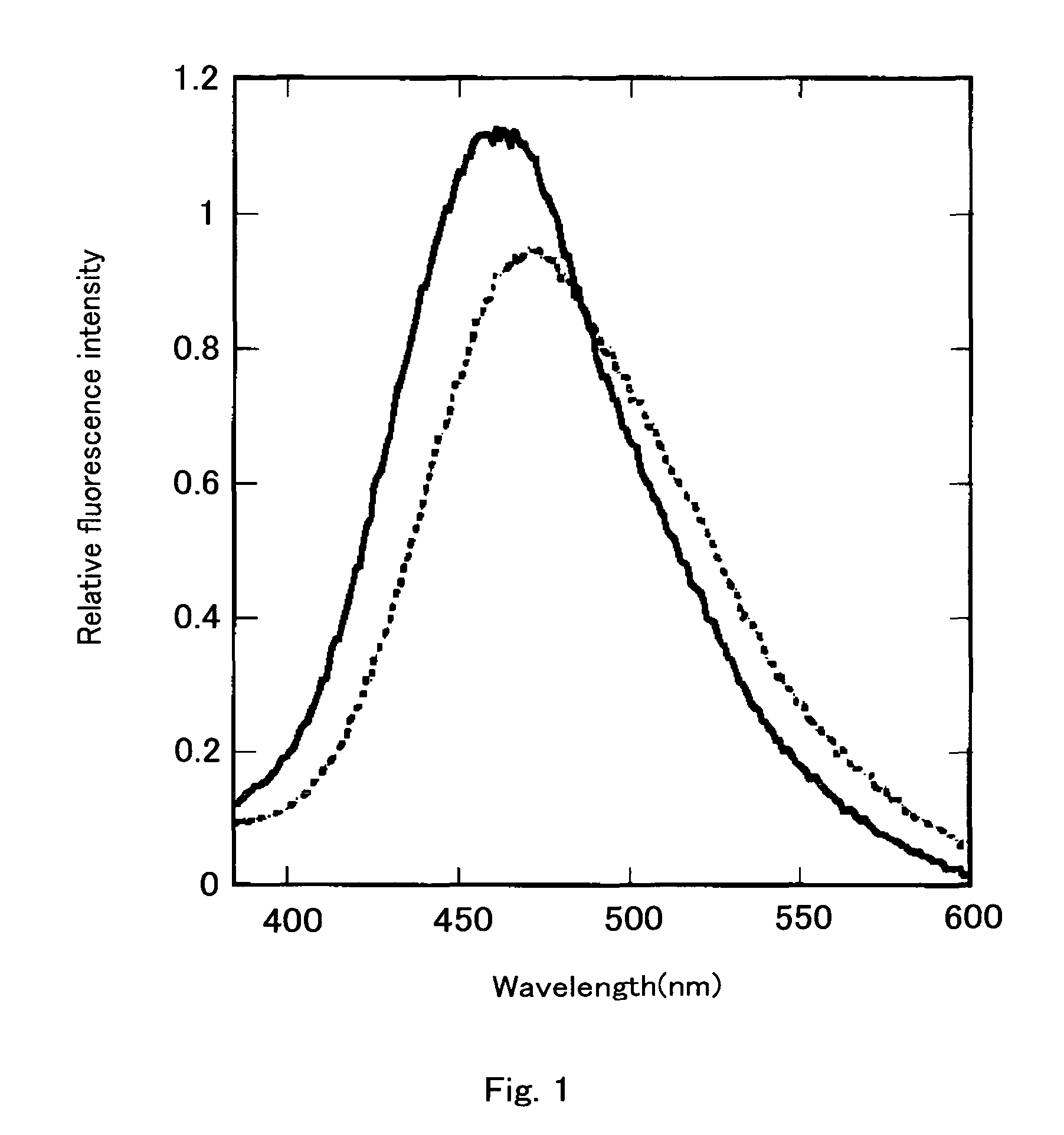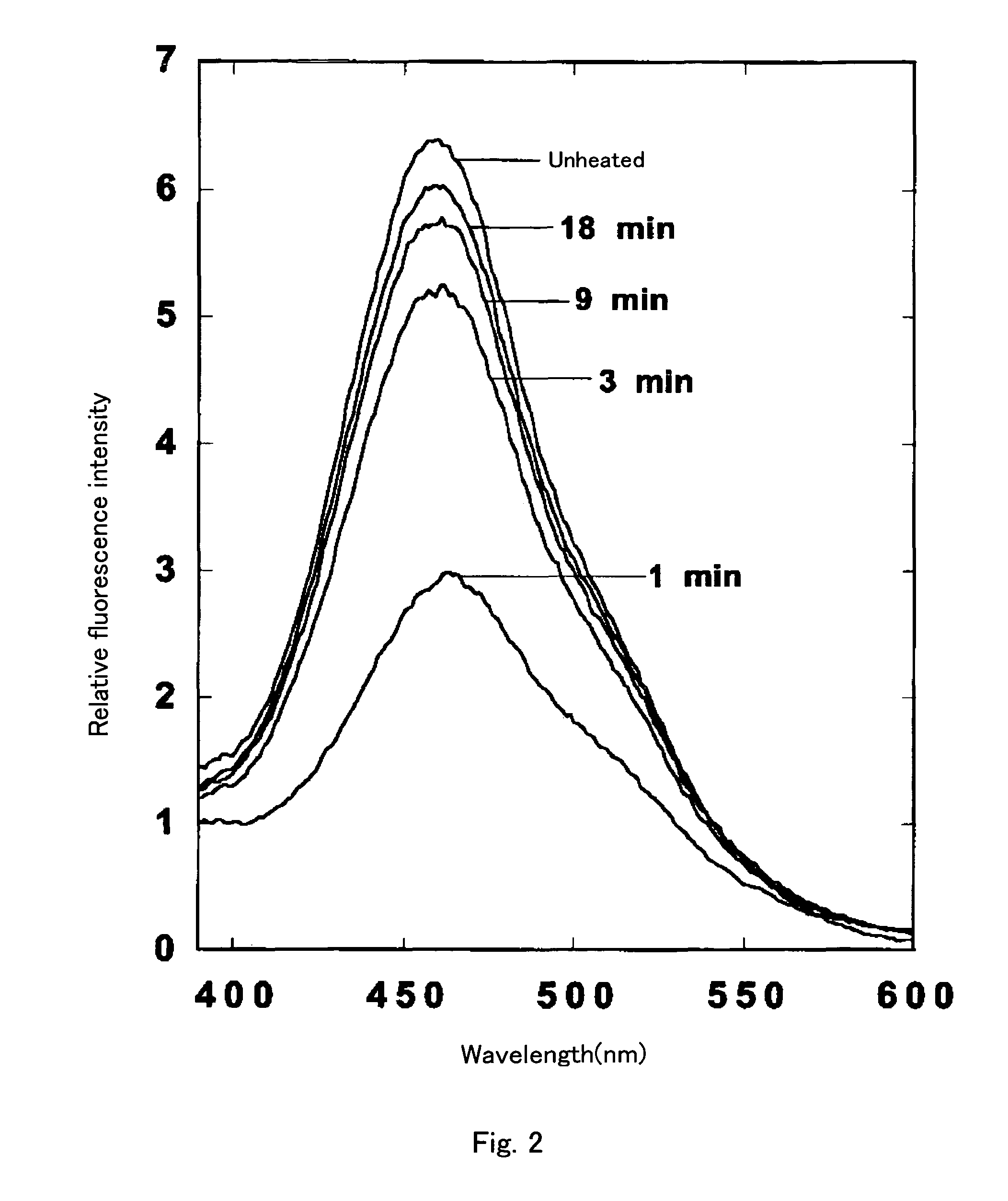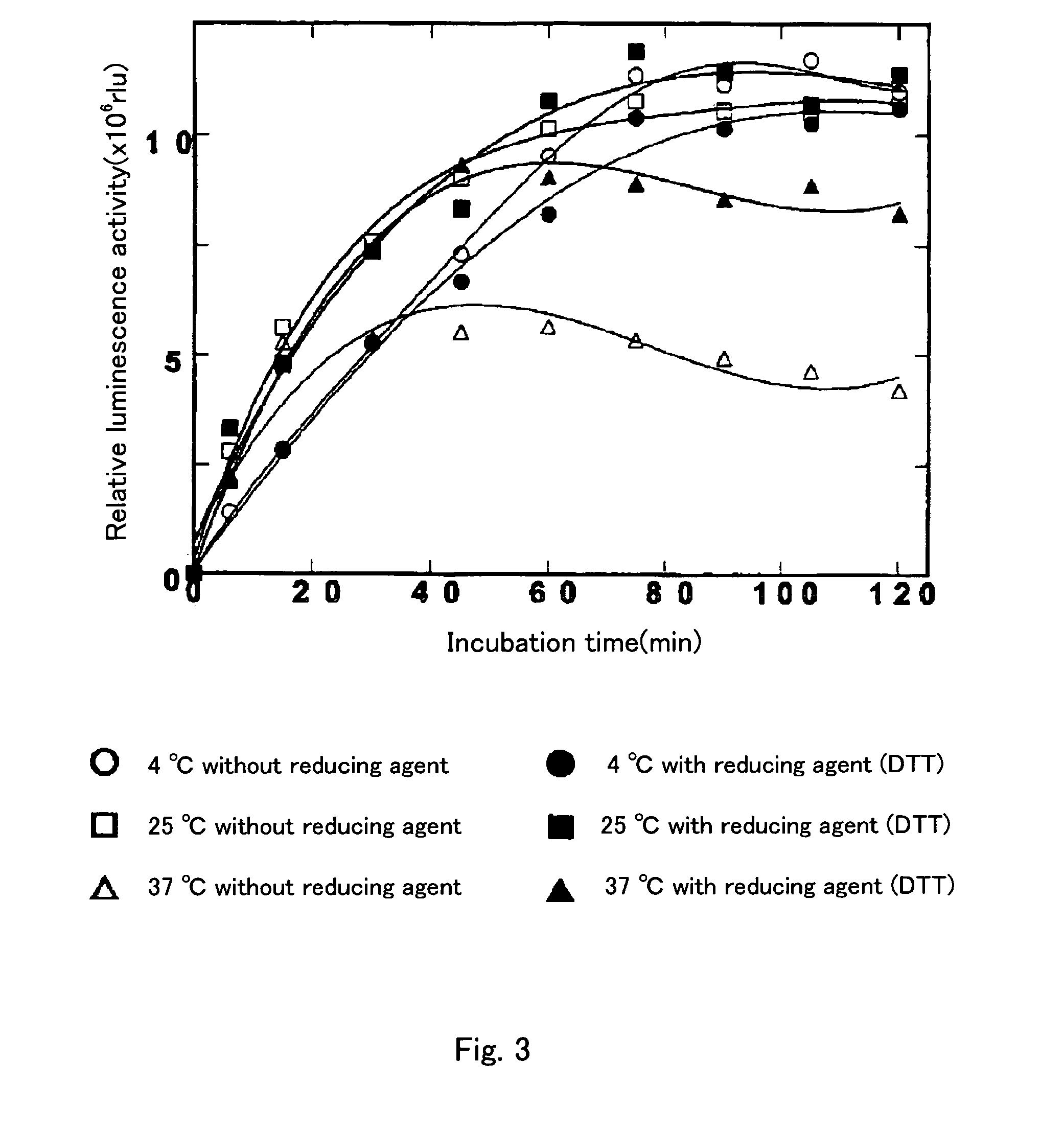Fluorescent proteins
a fluorescent protein and calcium binding technology, applied in the field of fluorescent proteins with chemiluminescence activity, can solve the problems of inability to detect the substance with feeble luminescence, the presence of substances with both chemiluminescence activity and fluorescence-generating ability, and the inability to heat up the chemiluminescent enzymes isolated so far, so as to achieve the effect of detecting the target substan
- Summary
- Abstract
- Description
- Claims
- Application Information
AI Technical Summary
Benefits of technology
Problems solved by technology
Method used
Image
Examples
example 1
Method for Preparation of Recombinant Aequorins [AQ, e-AQ, AND h-AQ]
[0143]As shown below, recombinant aequorins were obtained by expressing the recombinant apoaequorin gene in the E. coli described in Japanese Laid-Open Application No. 1989-132397, forming complexes as recombinant aequorins by binding the expressed product to coelenterazine, and subsequently purifying the complexes as described in Japanese Laid-Open Application No. 2001-270899. The recombinant apoaequorins obtained is composed of 191 amino acids, whose N-terminus starts from Ala-Asn-Ser-(Val- of the N-terminal of SEQ ID NO: 1 in the sequence listing has been replaces by Ala-Asn-Ser-). These specifications are incorporated herein by reference.
1) Expression of Recombination Apoaequorins in E. coli
[0144]To express recombinant apoaequorins in E. coli, the apoaequorin gene expression vector piP-HE (refer to Japanese Laid-Open Application No. 1989-132397) constructed from pAQ440 harboring the apoaequorin gene (refer to J...
example 2
Preparation of Fluorescent Proteins Having Chemiluminescence Activity [bFP-aq, e-bFP-aq, AND h-bFP-aq]
1) Concentration of Aequorin (AQ)
[0151]An aequorin solution with an aequorin concentration of 8 mg / ml was prepared with a buffer containing 10 mM Tris-HCl (pH7.6), 2 m MEDTA, and 1.2M ammonium sulfate, using the purified aequorin described in Example 1 as a starting material.
[0152]1 ml of this aequorin solution was centrifuged at 5000×g at 4° C. for 60 min or longer with a high speed refrigerated centrifuge (CR20B2; manufactured by Hitachi Ltd.), using a Vivaspin 2 column (Manufactured by Zartorius K.K.) having a high-speed ultrafiltration filter, a polyethersulfone membrane with a fraction molecular weight of 10,000. The solution was concentrated to a total quantity of 1 ml or smaller. Further, to lower the EDTA concentration of the concentrated solution to 0.1 μM or lower, 10 mM Tris-HCl containing 1 ml of 0.1 μM EDTA was loaded onto the Vivaspin 2 column and the total quantity wa...
example 3
Preparation of Fluorescent Proteins Generating Green Fluorescence [gFP-aq, e-gFP-aq, AND h-gFP-aq] from Fluorescent Proteins Having Chemiluminescence Activity [bFP-aq, e-bFP-aq, AND h-bFP-aq]
1) Preparation of gFP-aq
[0155]gFP-aq was prepared by removing calcium with EDTA from bFP-aq prepared in Example 2. That is, 2 ml of 50 mM Tris-HCl (pH 7.6) containing 10 mM EDTA was added to the bFP-aq in the Vivaspin 2 column for centrifugation under the aforementioned identical condition. This operation was repeated three times. The product was confirmed to emit green fluorescence under a long wavelength UV lamp (maximum wavelength: 366 nm). The recovery rate of the amount of proteins was quantitive.
[0156]To remove an excessive EDTA solution from the product, 2 ml of 50 mM Tris-HCl (pH 7.6) was added and the column was centrifuged under the aforementioned identical condition. This operation was repeated five times and the excessive EDTA was removed.
2) Preparation of e-gFP-aq and h-gFP-aq
[0157]...
PUM
| Property | Measurement | Unit |
|---|---|---|
| wave length | aaaaa | aaaaa |
| temperature | aaaaa | aaaaa |
| temperature | aaaaa | aaaaa |
Abstract
Description
Claims
Application Information
 Login to View More
Login to View More - R&D
- Intellectual Property
- Life Sciences
- Materials
- Tech Scout
- Unparalleled Data Quality
- Higher Quality Content
- 60% Fewer Hallucinations
Browse by: Latest US Patents, China's latest patents, Technical Efficacy Thesaurus, Application Domain, Technology Topic, Popular Technical Reports.
© 2025 PatSnap. All rights reserved.Legal|Privacy policy|Modern Slavery Act Transparency Statement|Sitemap|About US| Contact US: help@patsnap.com



